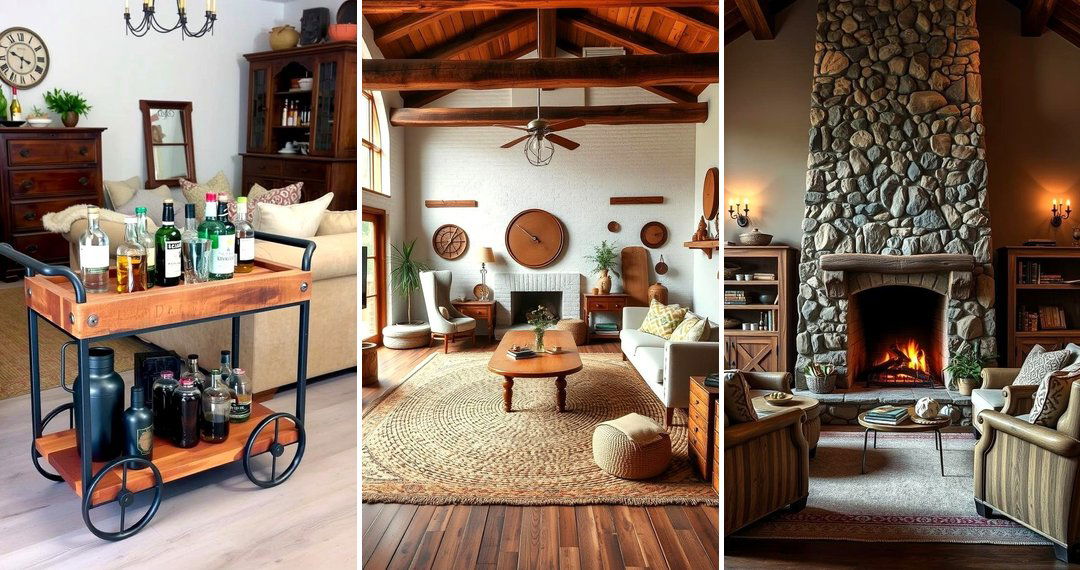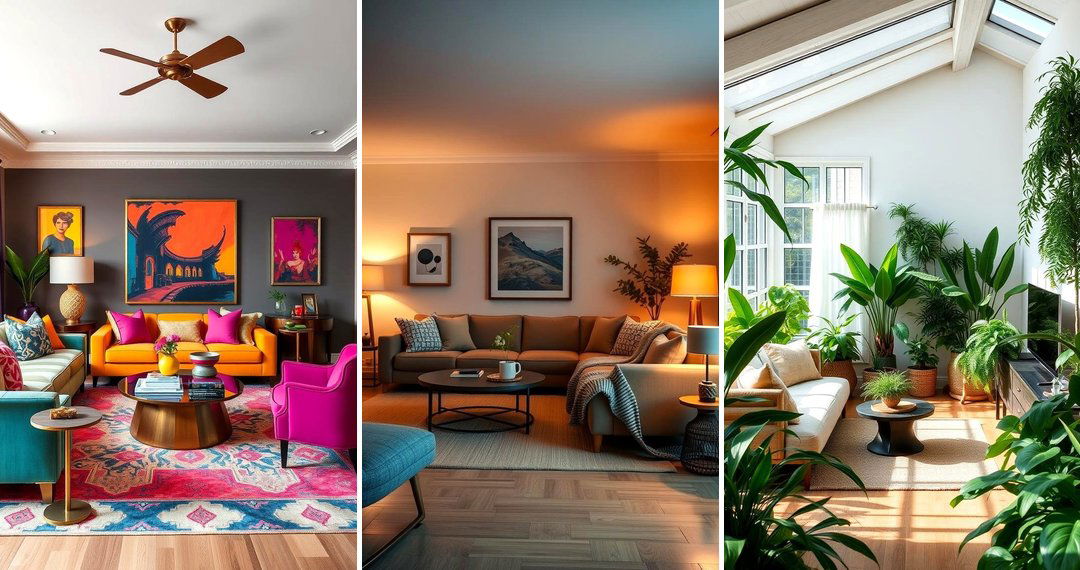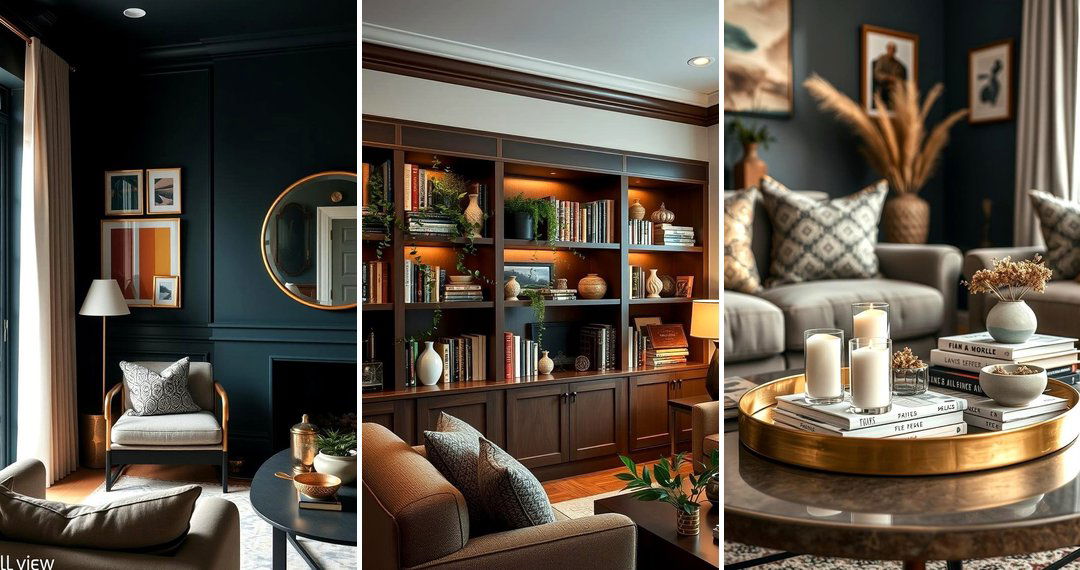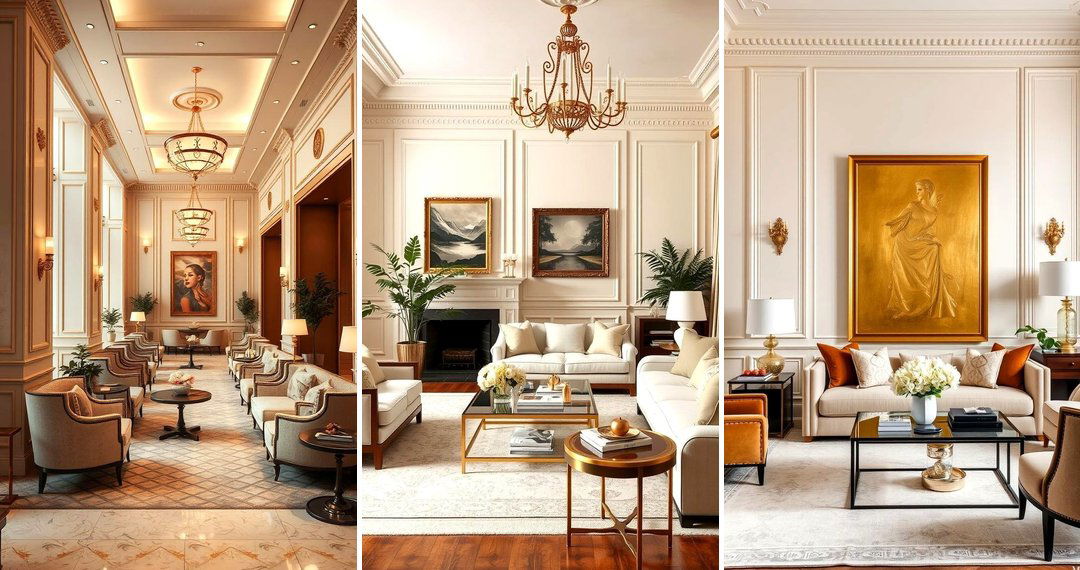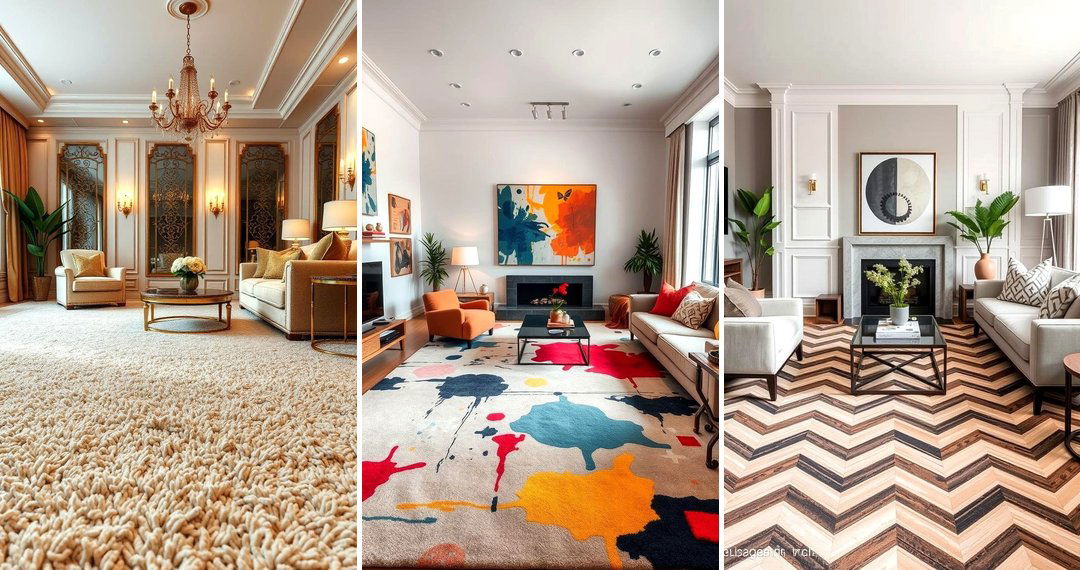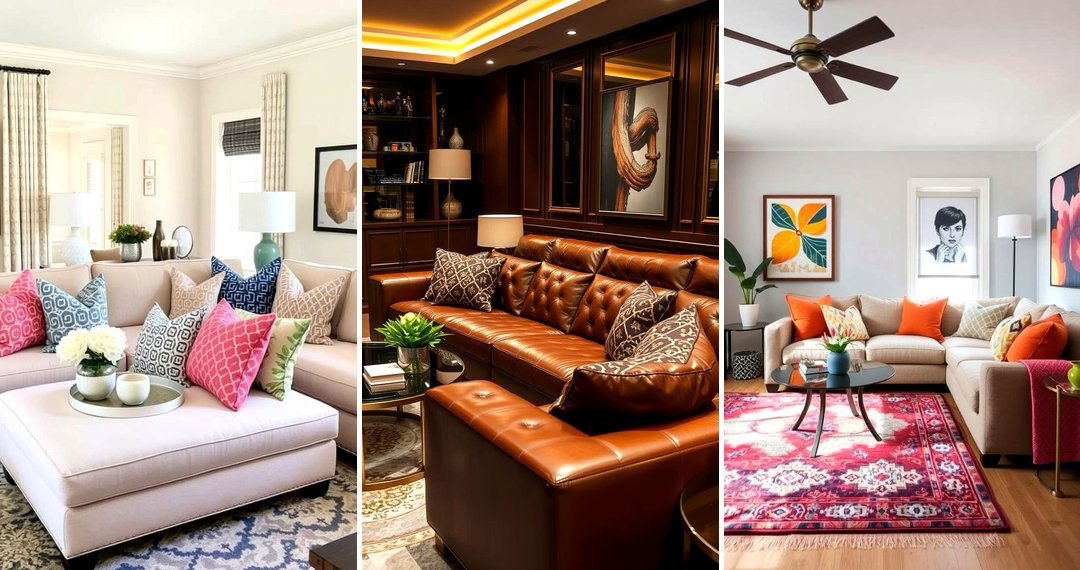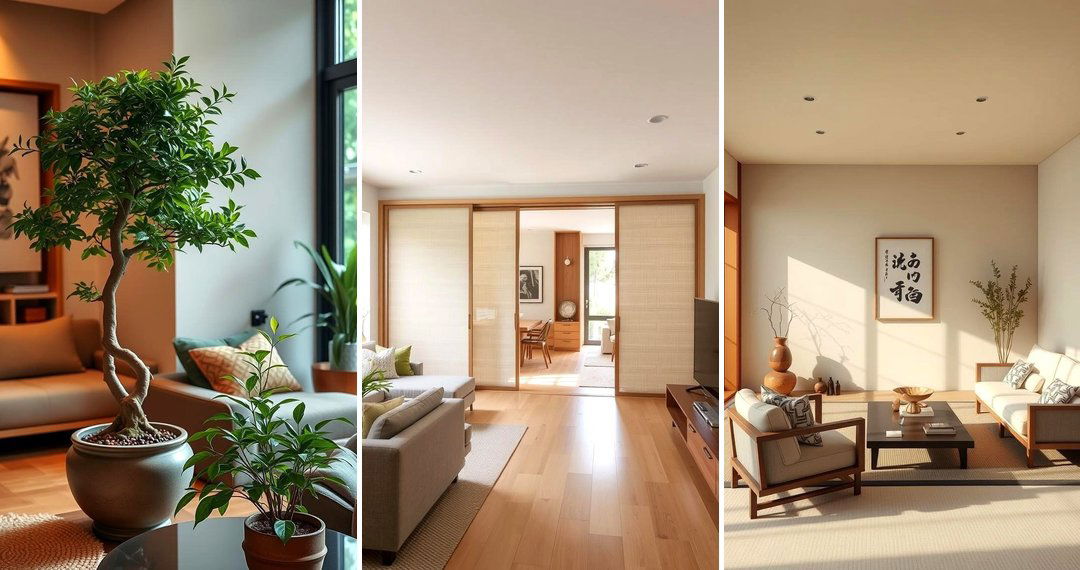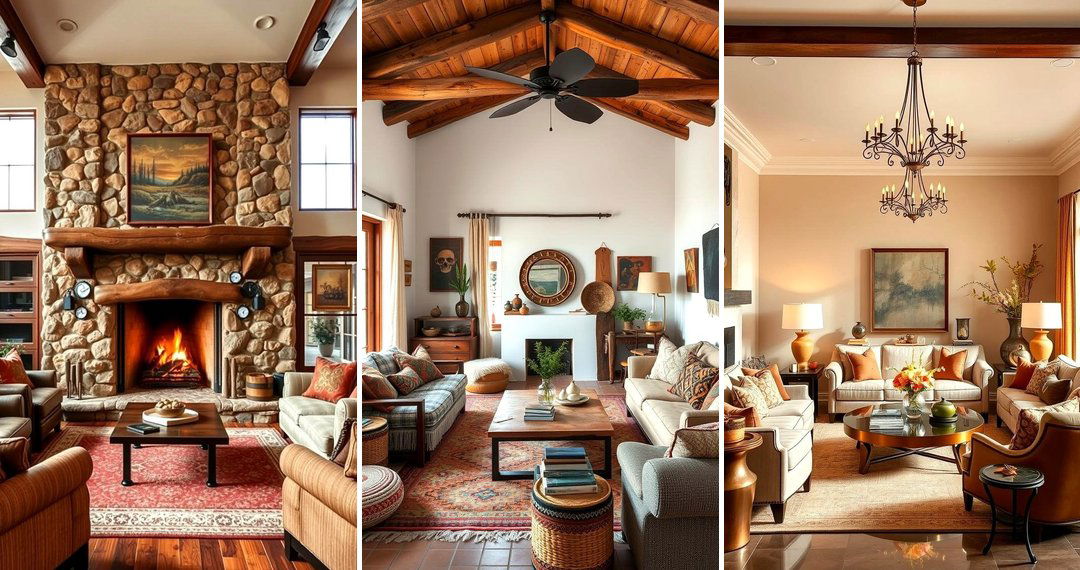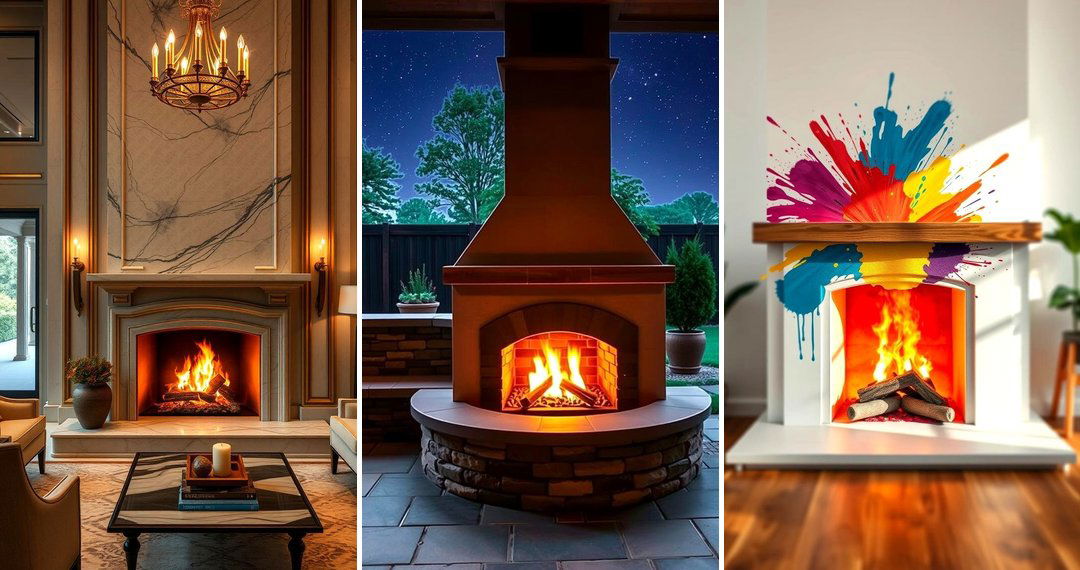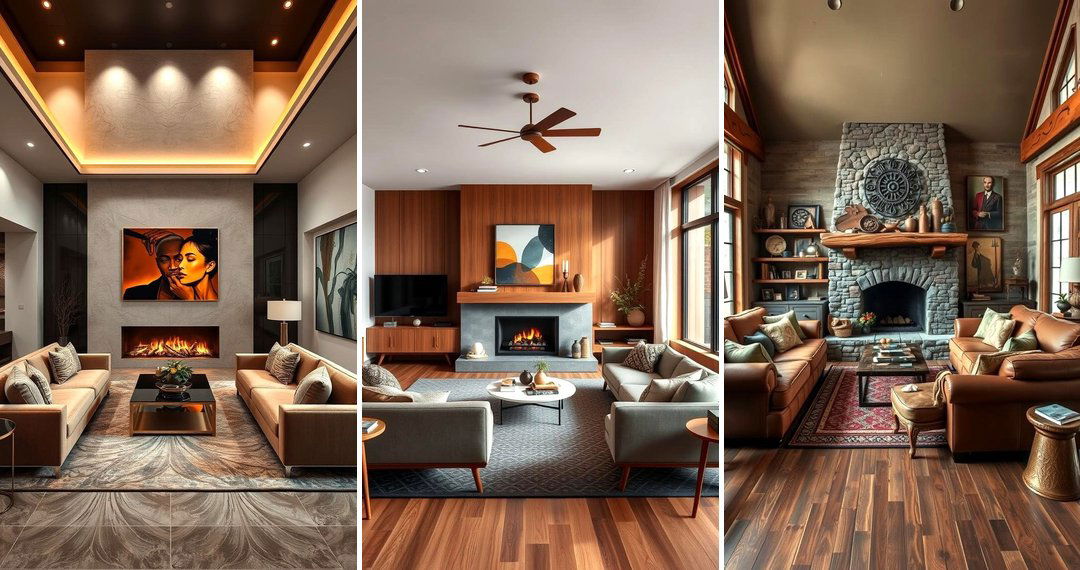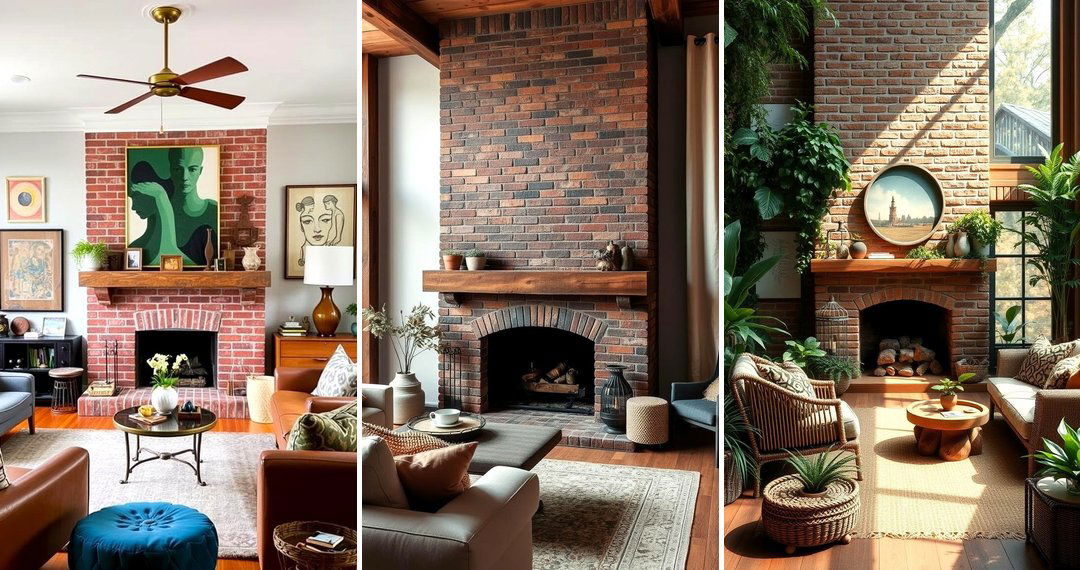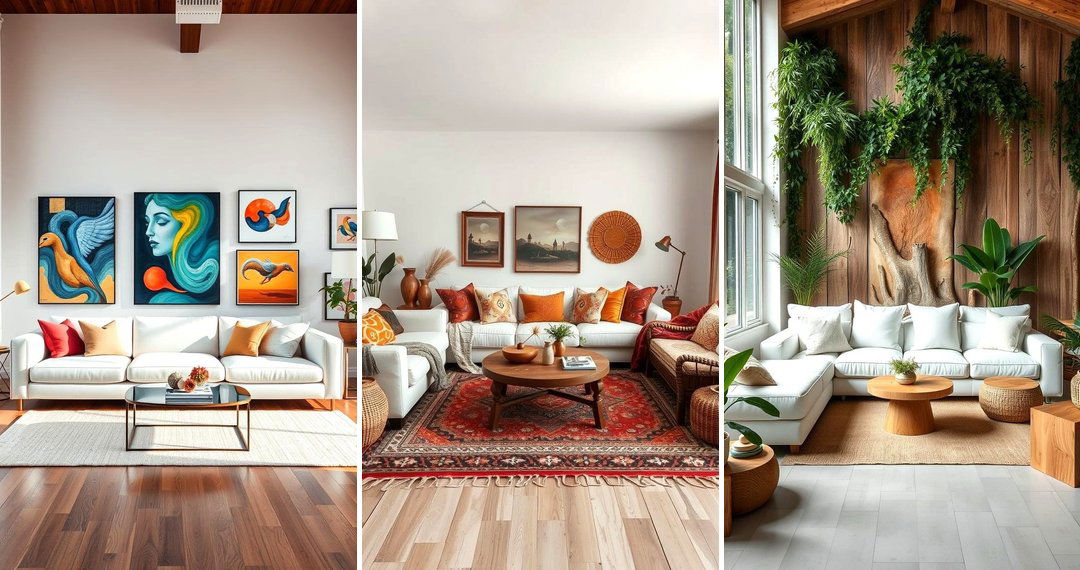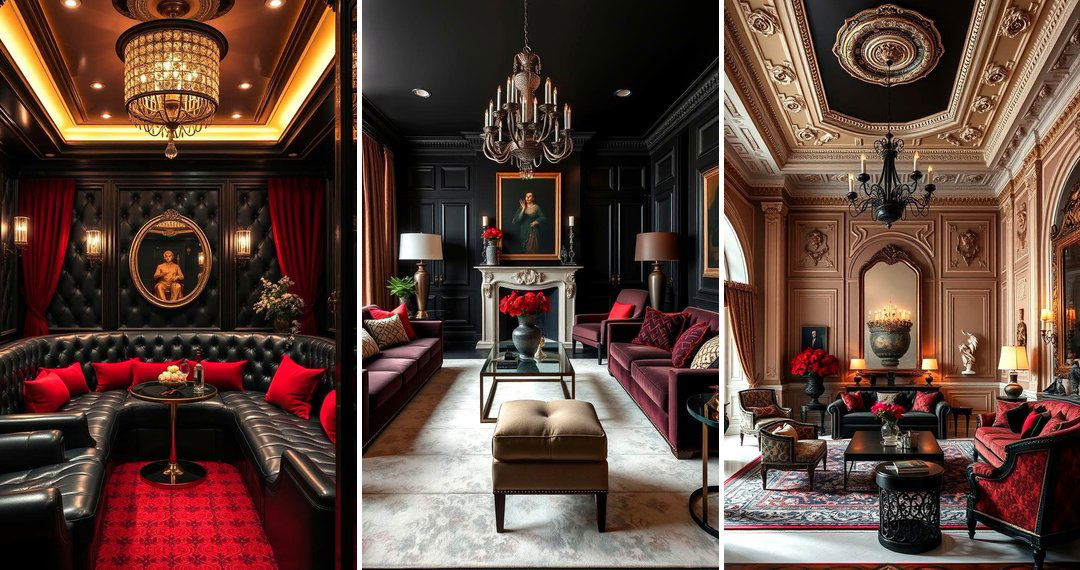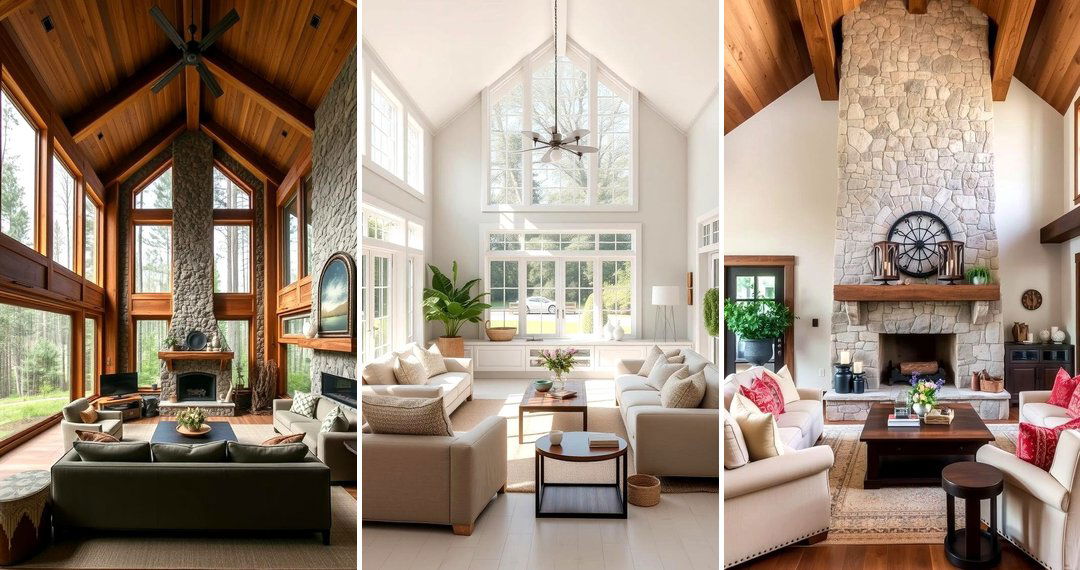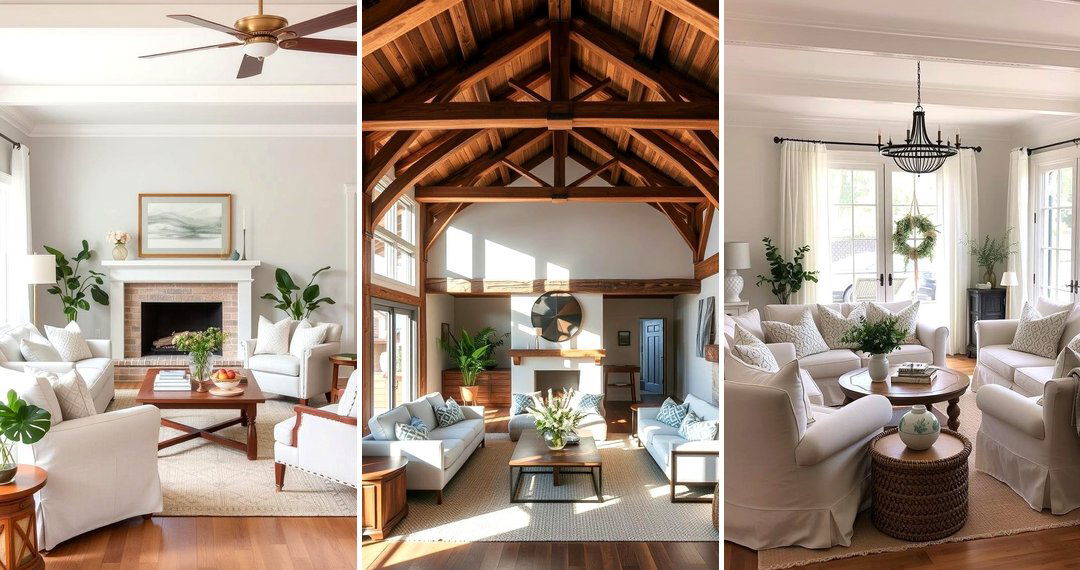Embrace the tranquility of a Zen-inspired living space, a sanctuary designed for peace and mindful living. Moving beyond mere aesthetics, a Zen living room fosters a sense of calm and balance, inviting you to unwind and reconnect with yourself. It's about creating an environment that supports your well-being, a haven where simplicity reigns and serenity is the ultimate luxury. Let's explore some inspiring ideas to transform your living room into a Zen retreat.
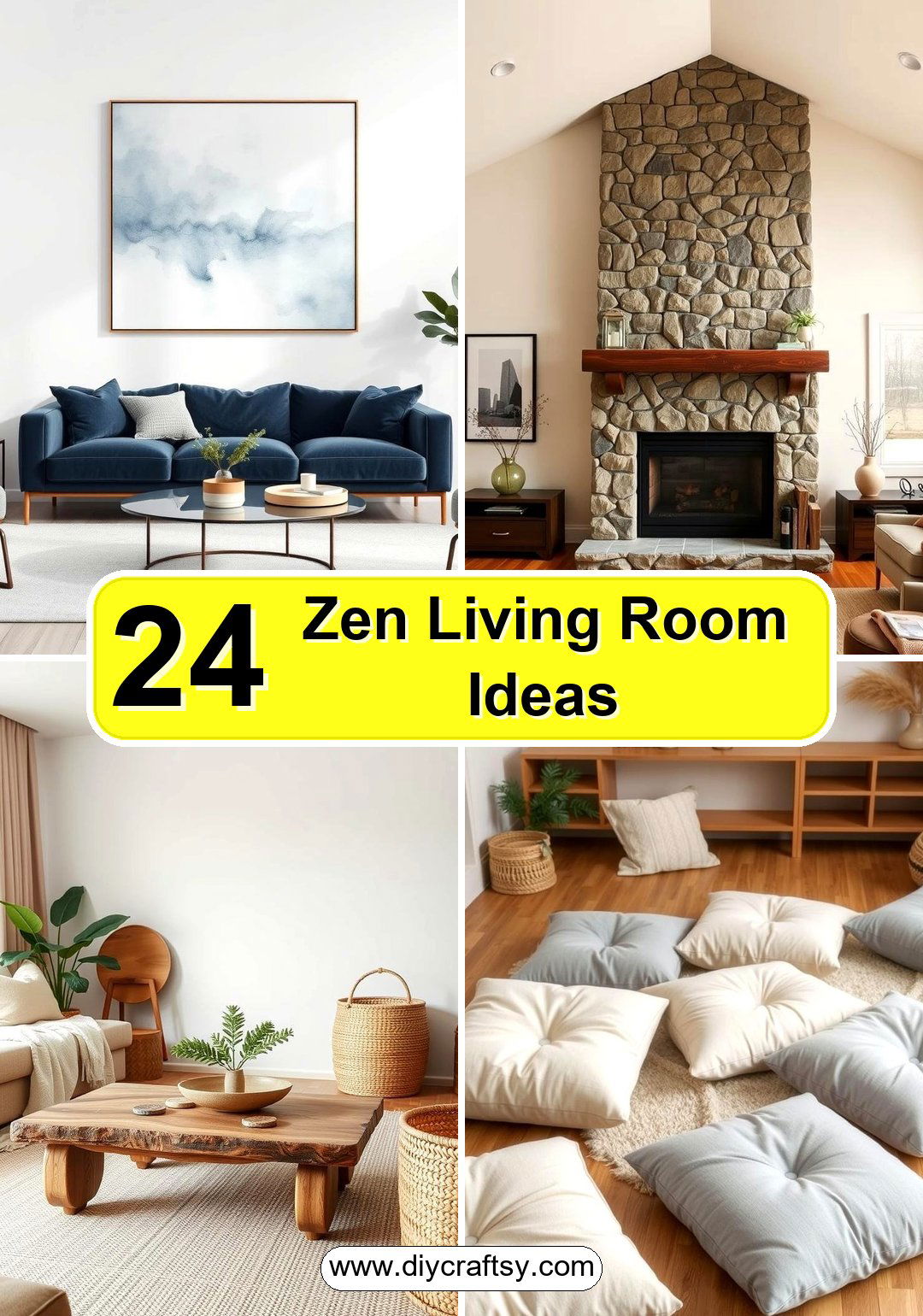
1. Neutral Color Palette for Serenity
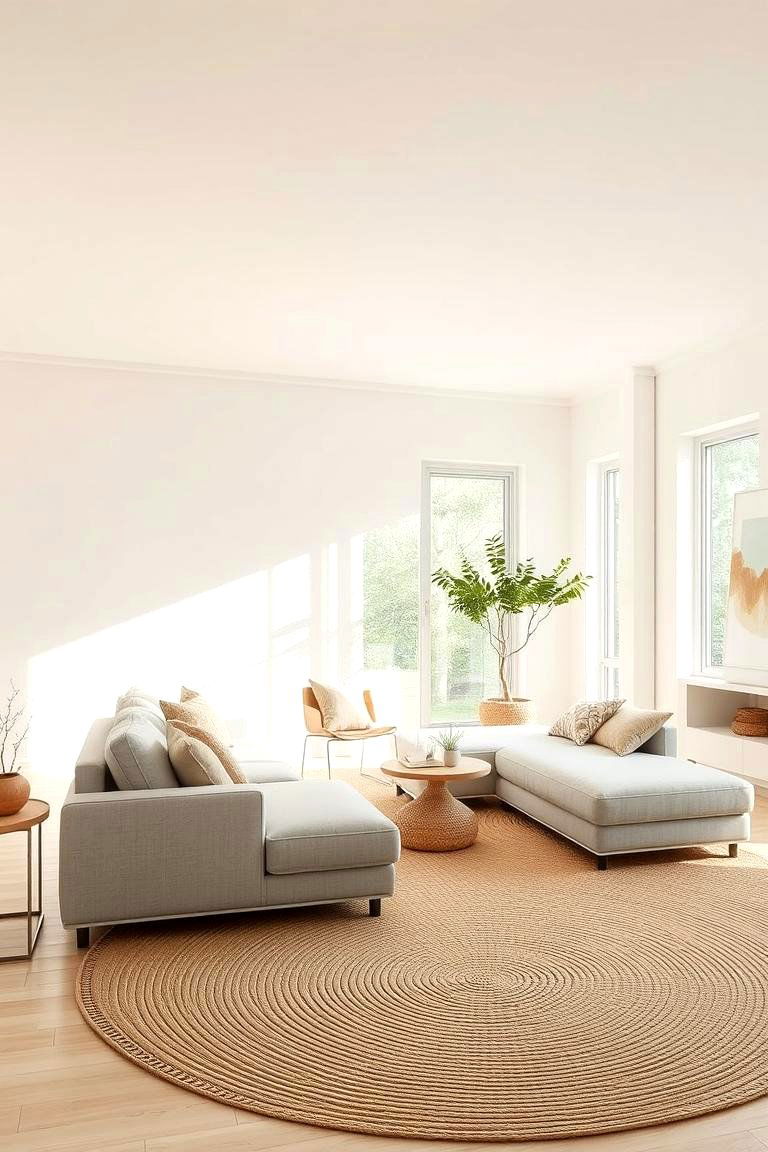
The foundation of a Zen living room often begins with its color scheme. Think soft whites, gentle greys, and warm beiges that evoke a sense of tranquility and calm. These hues create a backdrop that allows other elements in the room to stand out without overwhelming the senses. Moreover, a neutral palette promotes a feeling of spaciousness and light, contributing to the overall peaceful ambiance. By opting for these serene shades, you're setting the stage for a truly relaxing and Zen-inspired living space. This approach helps to minimize visual clutter and encourages a sense of inner peace.
2. Natural Light Maximization for Vitality

Consider the impact of natural light on your living space. A Zen approach embraces the outdoors, and maximizing sunlight is key to achieving this. Sheer curtains or blinds allow soft, diffused light to filter in, creating a warm and inviting atmosphere. Furthermore, strategically placed mirrors can help to bounce light around the room, making it feel brighter and more open. By optimizing natural light, you enhance the connection to the outside world and bring a sense of vitality into your Zen living room. This simple yet effective technique can significantly uplift the mood and create a more harmonious environment.
3. Minimalist Furniture Arrangement for Flow
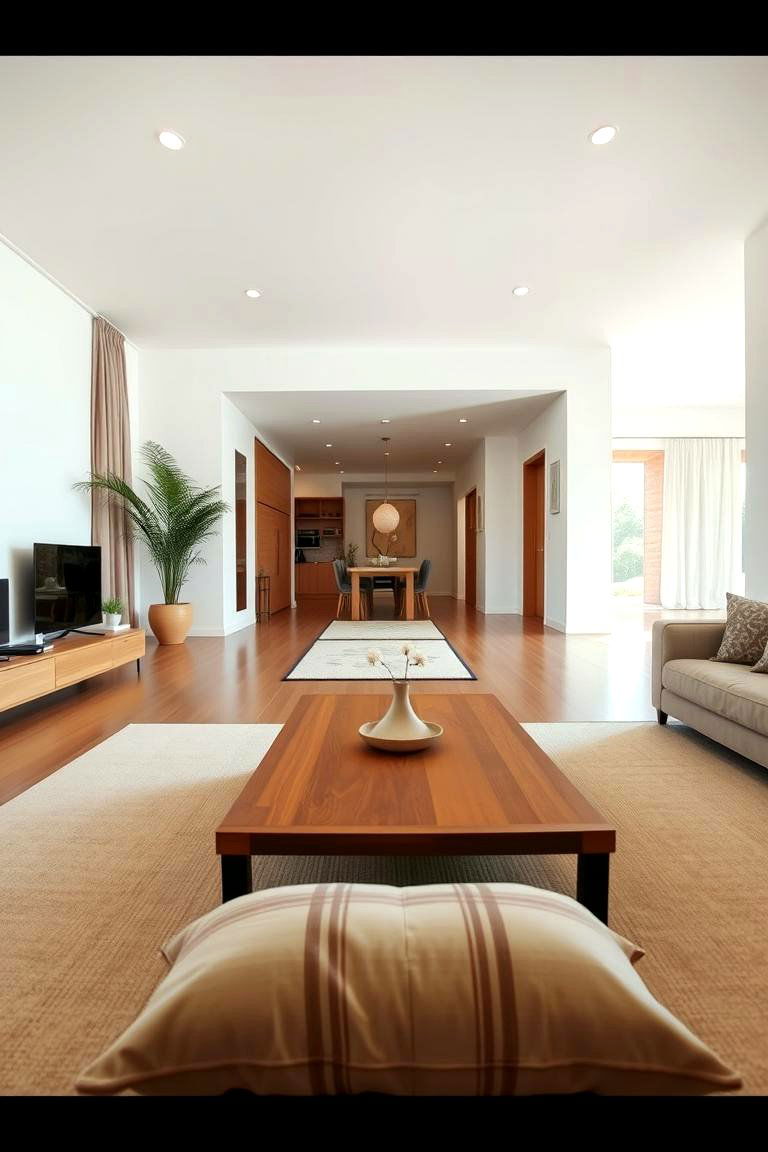
Another crucial aspect of a Zen living room is the thoughtful arrangement of furniture. Embrace a minimalist approach, selecting only essential pieces that serve a purpose. Focus on creating open pathways and avoid overcrowding the space. This allows energy to flow freely, promoting a sense of ease and tranquility. By carefully choosing and positioning your furniture, you can create a living room that feels spacious, uncluttered, and conducive to relaxation. Remember, in a Zen space, less is often more, contributing to a greater sense of calm.
4. Indoor Plants for a Touch of Nature
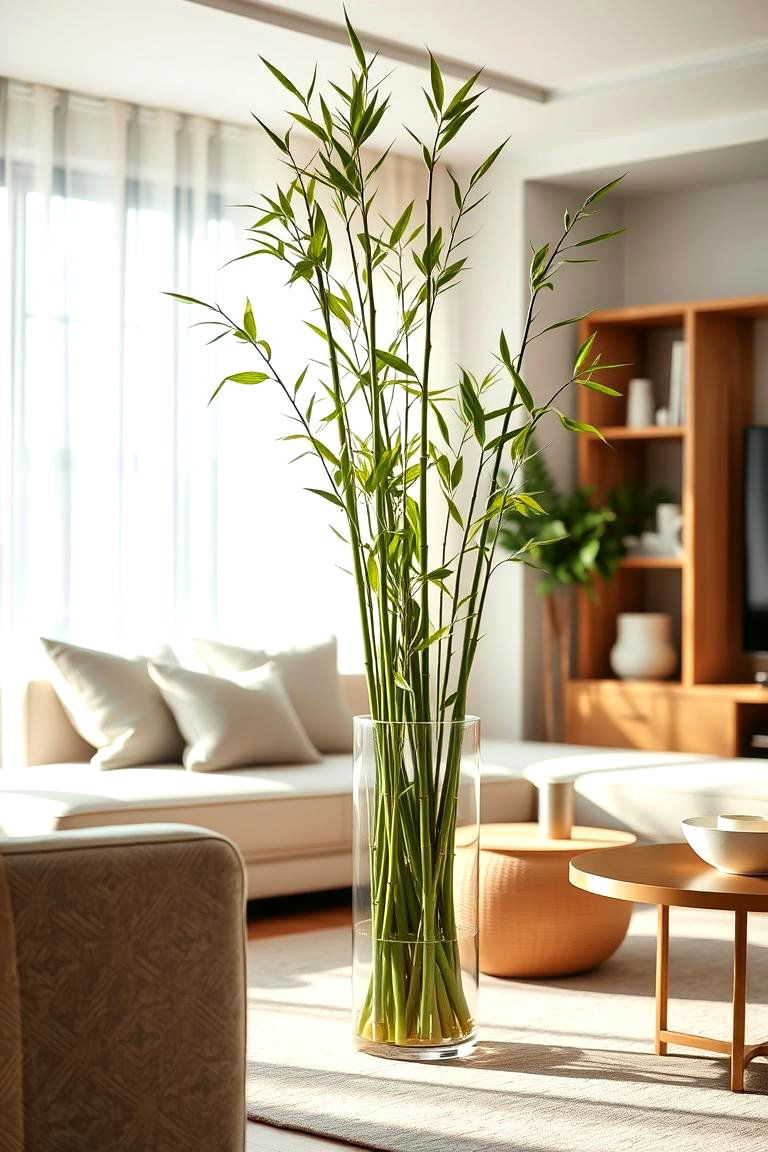
Bringing the outdoors in is a cornerstone of Zen design, and incorporating indoor plants is an excellent way to achieve this. Choose plants with lush greenery, such as bamboo, snake plants, or peace lilies, known for their air-purifying qualities and calming presence. Moreover, the natural shapes and textures of plants add a touch of organic beauty to the space, fostering a connection with nature. By strategically placing a few well-chosen plants, you can infuse your living room with a sense of freshness and vitality, enhancing its Zen-like atmosphere.
5. Decluttered Space for Mental Clarity
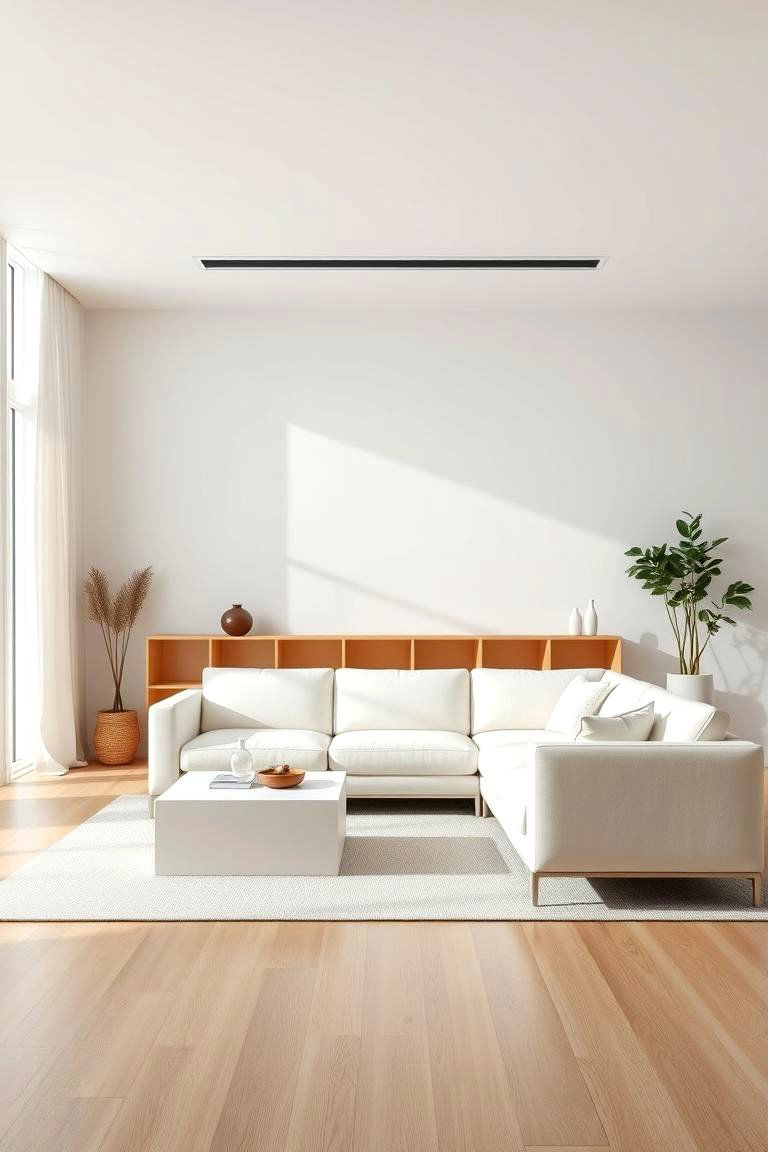
What truly defines a Zen living room is the absence of clutter. A clean and organized space promotes mental clarity and reduces distractions. Take the time to declutter your living room, removing unnecessary items and finding dedicated storage solutions for everything else. Furthermore, regularly maintaining a tidy environment will contribute significantly to the overall sense of peace and tranquility. By embracing a clutter-free approach, you create a serene and harmonious space that allows your mind to relax and find focus.
6. Comfortable and Soft Textiles for Warmth
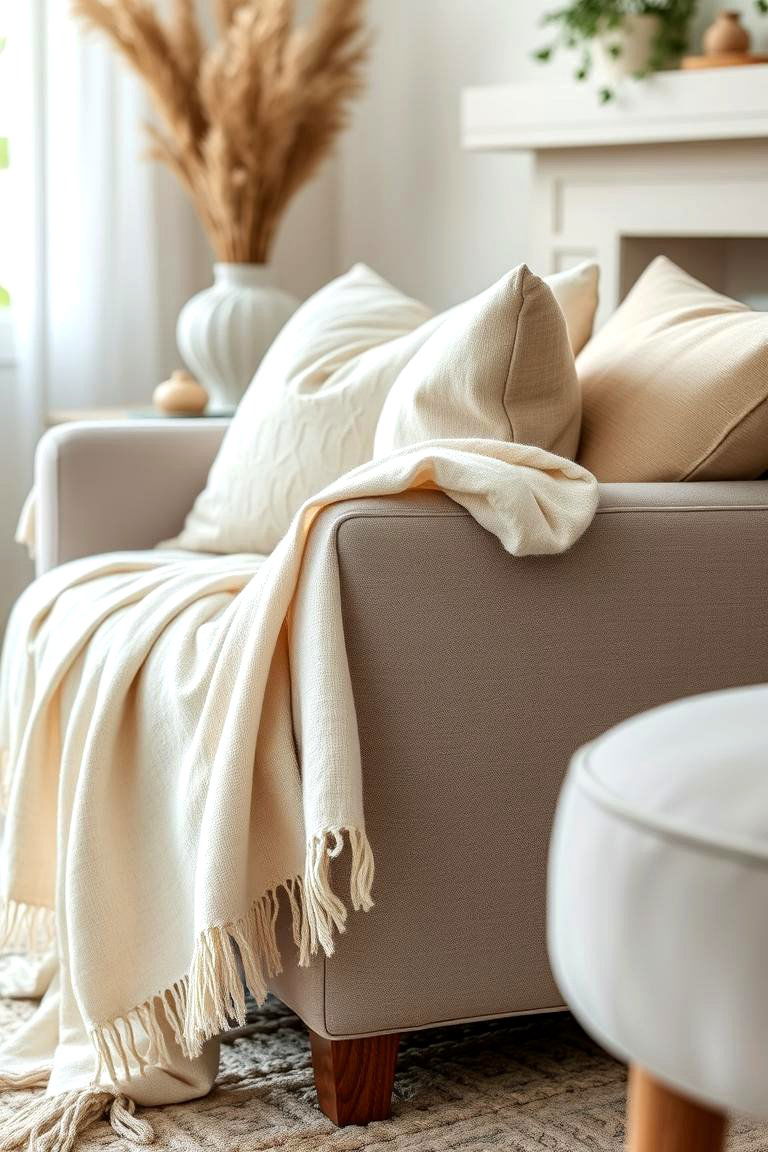
With a focus on comfort and relaxation, the choice of textiles in a Zen living room is paramount. Opt for soft and natural materials like linen, cotton, and wool for your throws, cushions, and rugs. These textures add warmth and a tactile element to the space, inviting you to sink in and unwind. Additionally, consider a neutral or earthy color palette for your textiles to maintain the overall serene aesthetic. By carefully selecting comfortable and inviting fabrics, you enhance the cozy and peaceful ambiance of your Zen living room.
7. Natural Materials for an Earthy Feel
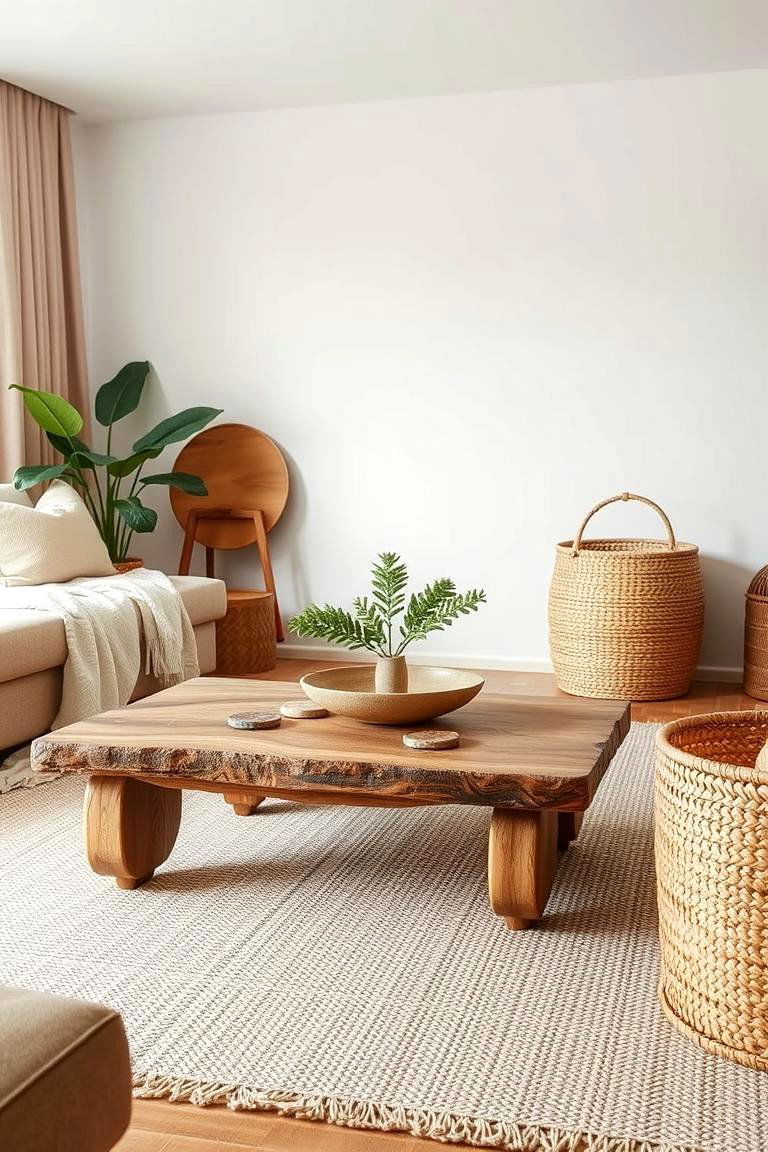
Take inspiration from nature by incorporating natural materials into your Zen living room design. Think wood, stone, and bamboo for furniture, flooring, and decorative accents. These materials bring an organic and grounding energy to the space, fostering a sense of connection with the earth. Moreover, their inherent textures and subtle variations add visual interest without disrupting the overall calm. By embracing natural elements, you create a living room that feels both sophisticated and deeply rooted in tranquility.
8. Floor Cushions for Flexible Relaxation
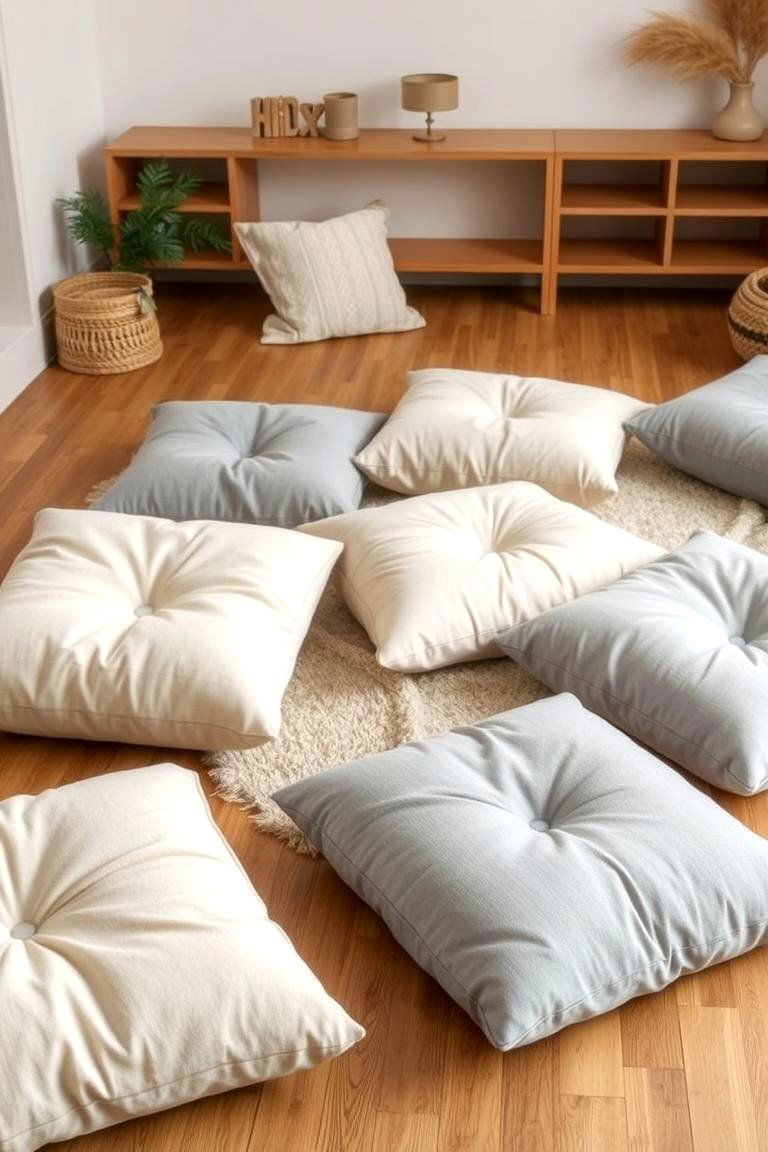
Consider adding floor cushions to your Zen living room for a versatile and relaxed seating option. These can be easily moved around to accommodate guests or create a comfortable spot for meditation or lounging. Furthermore, floor cushions contribute to a more informal and approachable atmosphere, encouraging a sense of ease and flexibility. Opt for cushions in natural fabrics and neutral tones to complement the overall Zen aesthetic. This simple addition can significantly enhance the comfort and functionality of your living space.
9. Ambient Lighting to Set the Mood
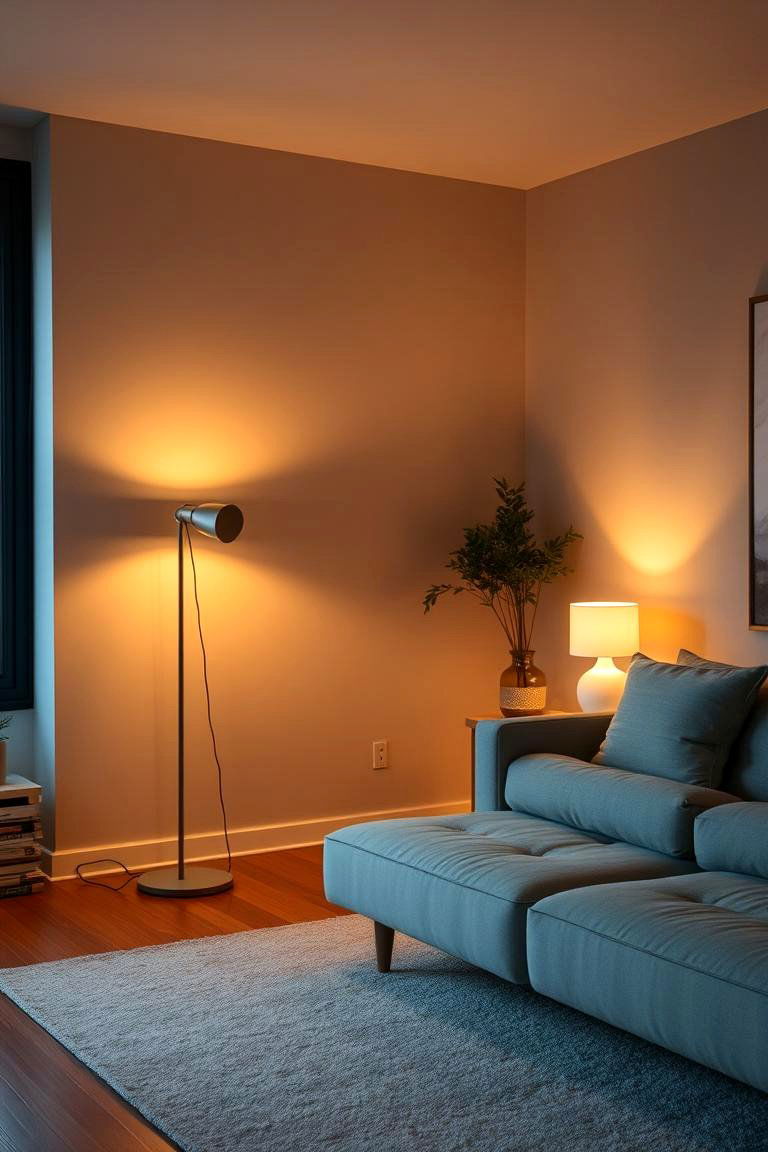
Looking at lighting, a Zen living room benefits from soft and diffused ambient light rather than harsh overhead fixtures. Incorporate table lamps, floor lamps, and even candles to create a warm and inviting glow. Dimmable lights offer flexibility to adjust the intensity according to your mood and the time of day. Moreover, the gentle illumination enhances the sense of tranquility and promotes relaxation. By carefully layering your lighting, you can create a soothing and peaceful atmosphere in your Zen living room.
10. Water Feature for Calming Sounds
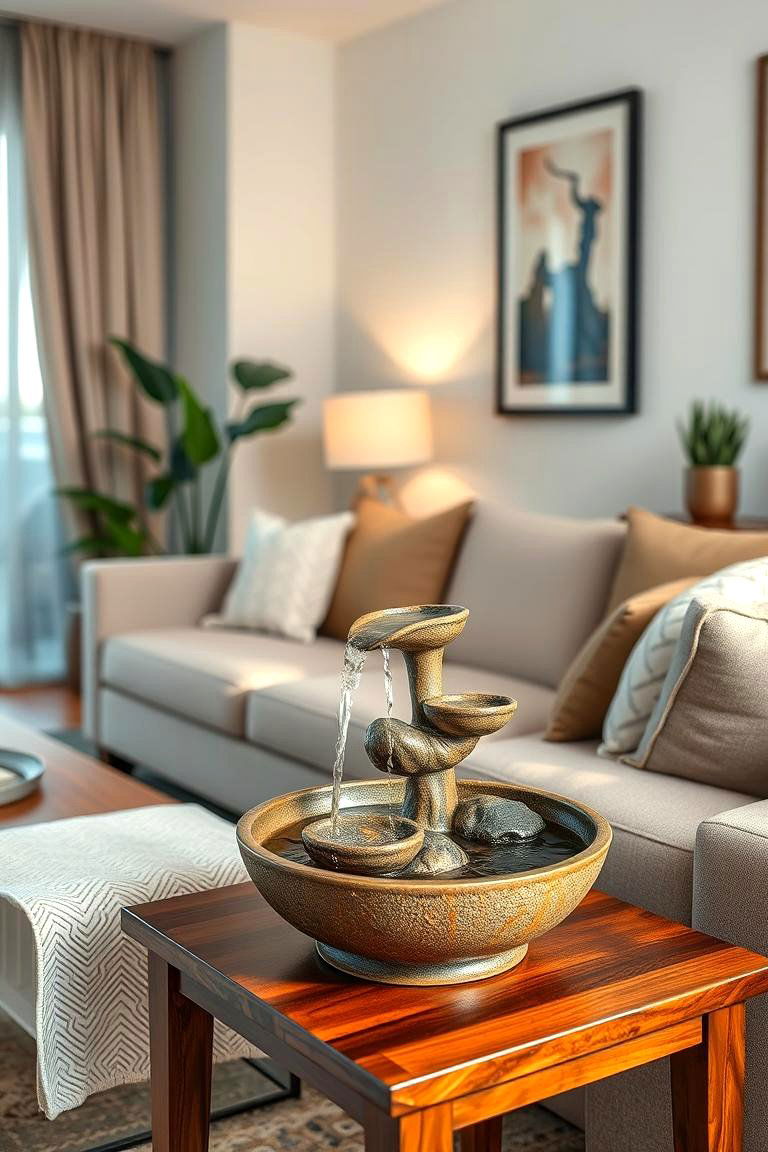
One way to introduce a sense of serenity is by incorporating a small water feature into your Zen living room. A tabletop fountain or a small indoor waterfall can create a soothing and calming ambiance with the gentle sound of flowing water. Furthermore, the visual element of moving water can be incredibly relaxing and can help to mask distracting background noises. By adding a water feature, you bring a touch of nature indoors and enhance the peaceful atmosphere of your Zen space.
11. Artwork with Calming Themes for Visual Peace
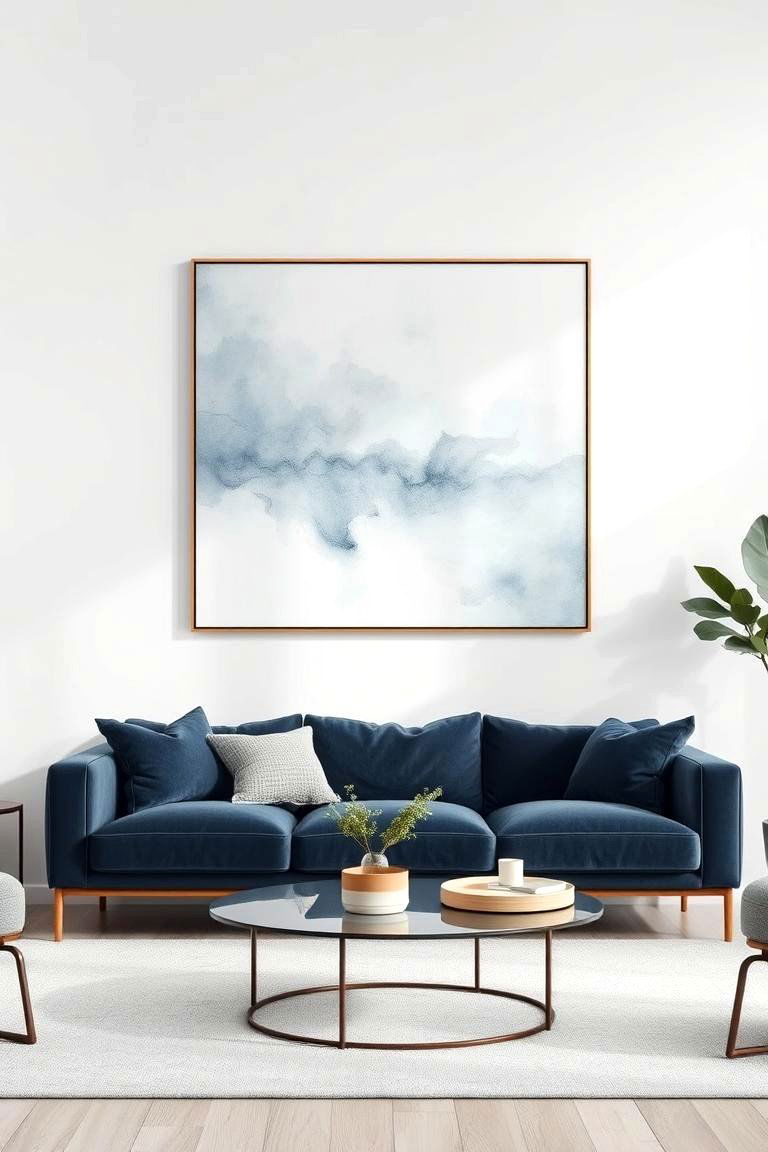
What you display on your walls can significantly impact the feeling of your Zen living room. Choose artwork that evokes a sense of calm and tranquility, such as nature scenes, abstract pieces with soft colors, or minimalist designs. Avoid overly busy or stimulating imagery. Moreover, consider the placement of your artwork, ensuring it complements the overall flow and balance of the room. By selecting artwork with calming themes, you enhance the visual serenity of your living space.
12. Essential Oil Diffuser for Sensory Harmony
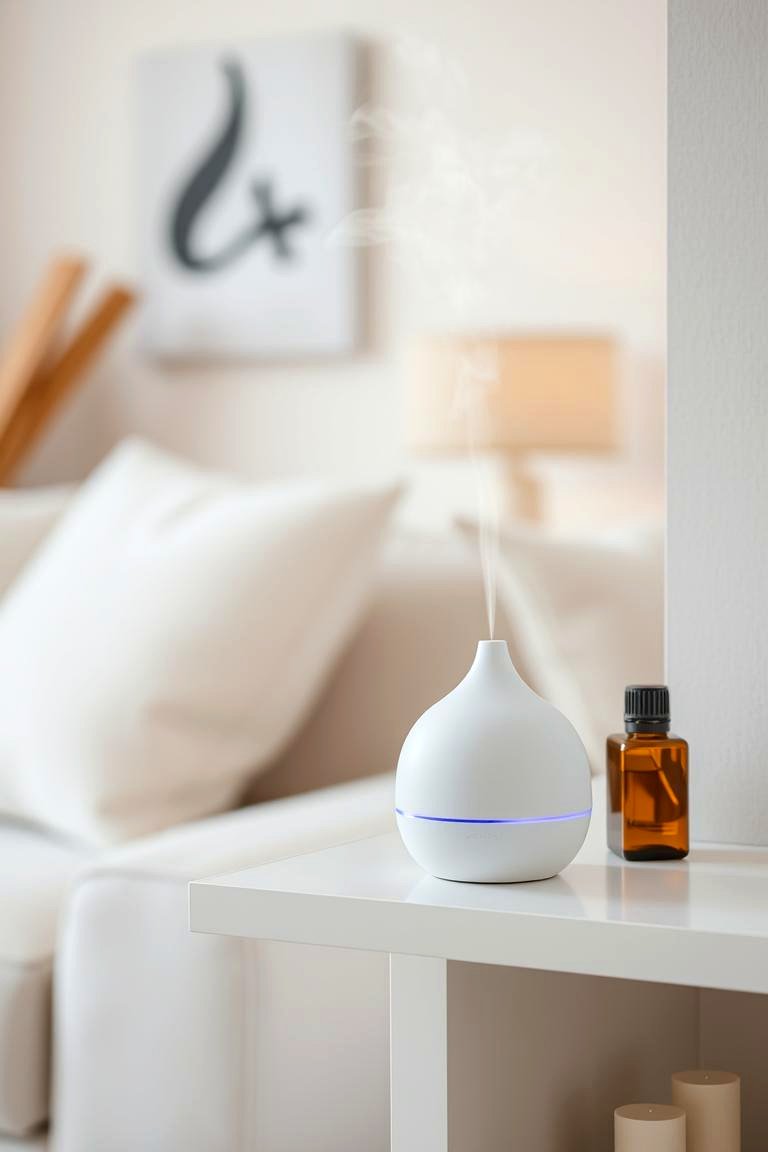
To engage another sense, consider using an essential oil diffuser in your Zen living room. Choose calming scents like lavender, chamomile, or sandalwood to promote relaxation and reduce stress. The subtle aroma can create a more peaceful and harmonious atmosphere. Furthermore, some essential oils are known for their therapeutic benefits, further enhancing the sense of well-being in your space. By incorporating aromatherapy, you add another layer of sensory comfort to your Zen retreat.
13. Meditation Nook for Mindful Moments
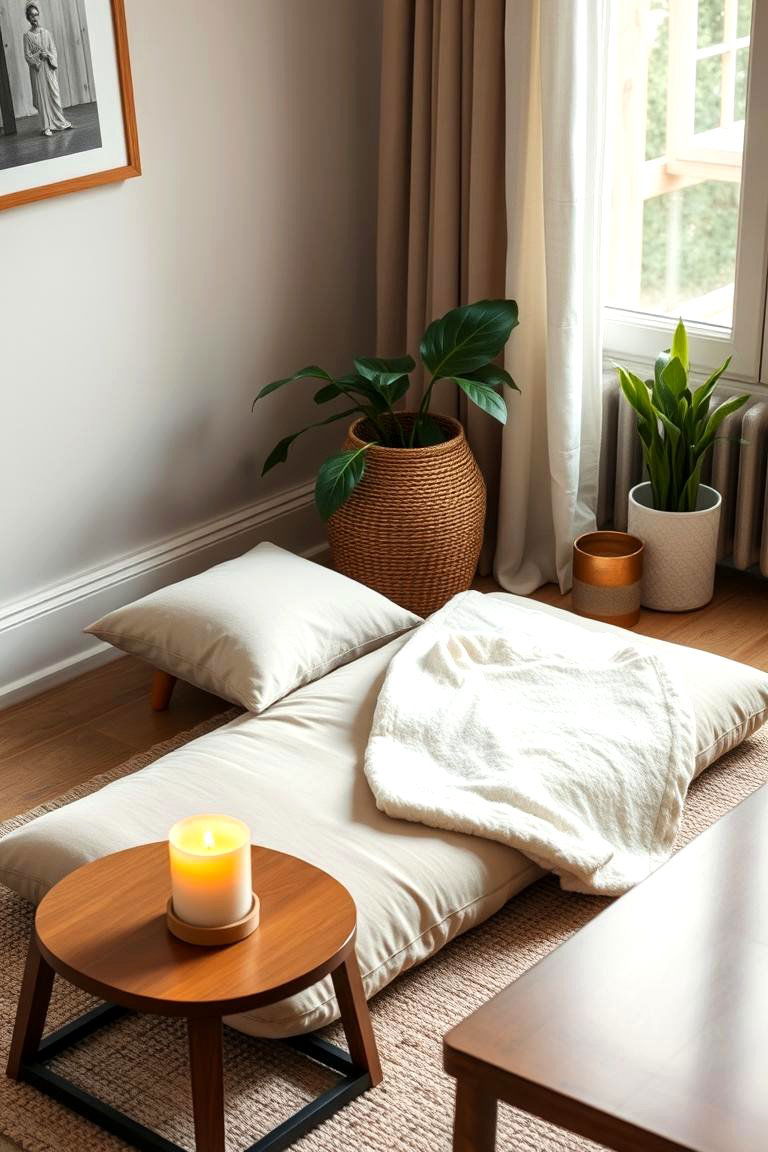
For those who practice meditation, creating a dedicated nook within your Zen living room can be incredibly beneficial. This could be a small corner with a comfortable cushion, a soft blanket, and perhaps a small table for candles or incense. The key is to create a space that feels separate and conducive to mindfulness and quiet reflection. By having a designated area for meditation, you encourage regular practice and enhance the sense of peace within your living room.
14. Open Space Concept for Unrestricted Flow
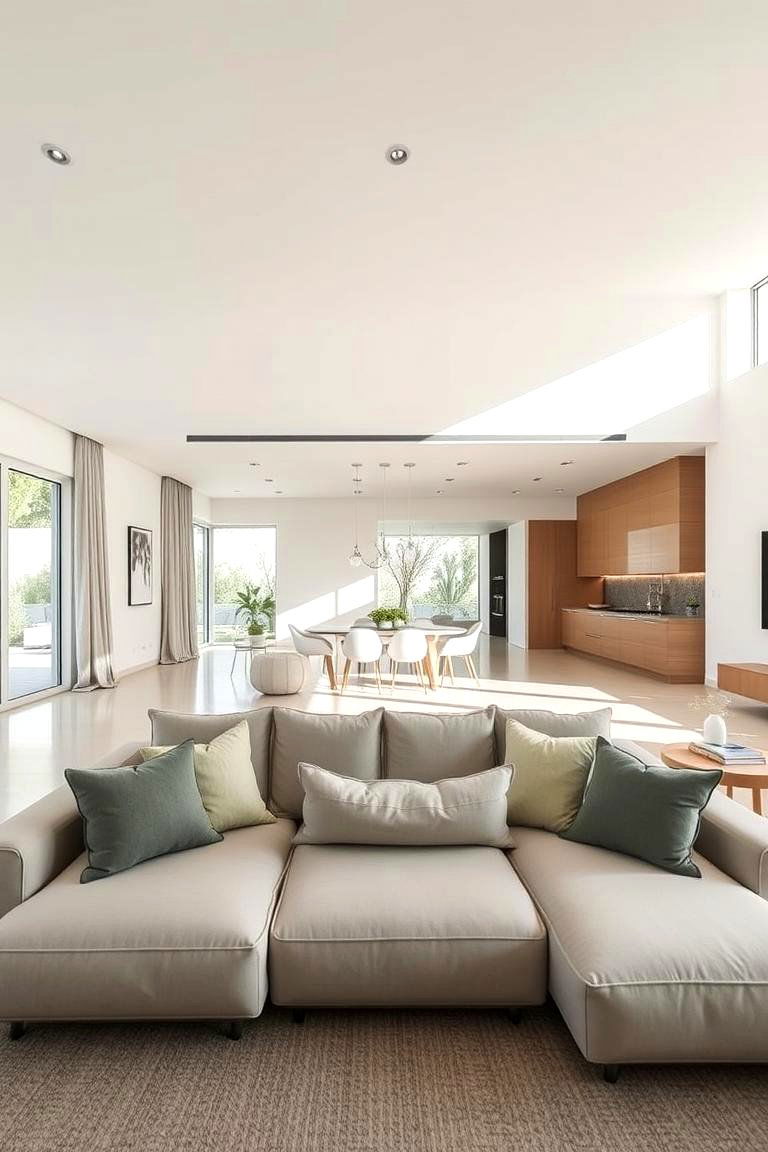
By embracing an open space concept, you can further enhance the Zen-like feeling of your living room. If possible, consider removing unnecessary walls to create a seamless flow between the living area and adjacent spaces like the dining room or kitchen. This promotes a sense of spaciousness and freedom, allowing energy to circulate freely. Moreover, an open layout encourages connection and a sense of harmony within the home.
15. Sliding Doors to Nature for Seamless Transition
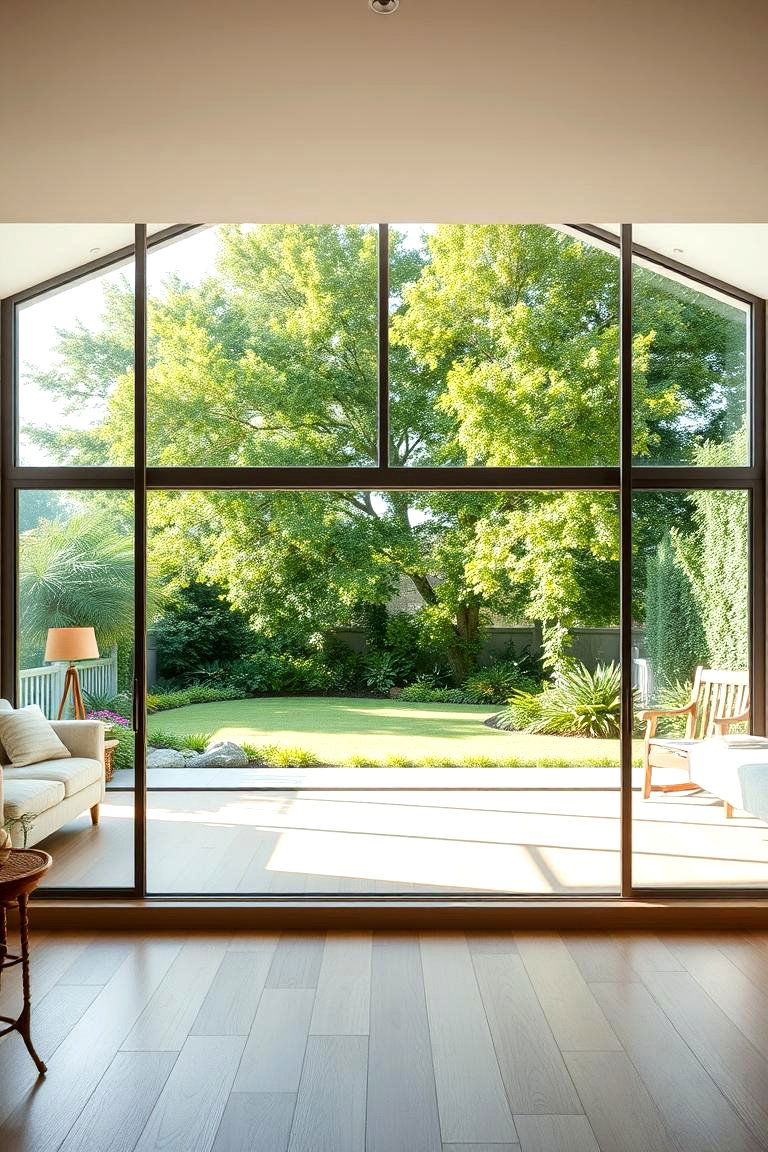
With the aim of connecting with the outdoors, consider incorporating sliding glass doors into your Zen living room design. These doors allow for an unobstructed view of nature and provide easy access to a patio or garden. The seamless transition between indoor and outdoor spaces blurs the lines and brings a sense of openness and tranquility to the interior. Furthermore, the abundance of natural light that floods in enhances the overall feeling of well-being.
16. Textured Rugs for Underfoot Comfort
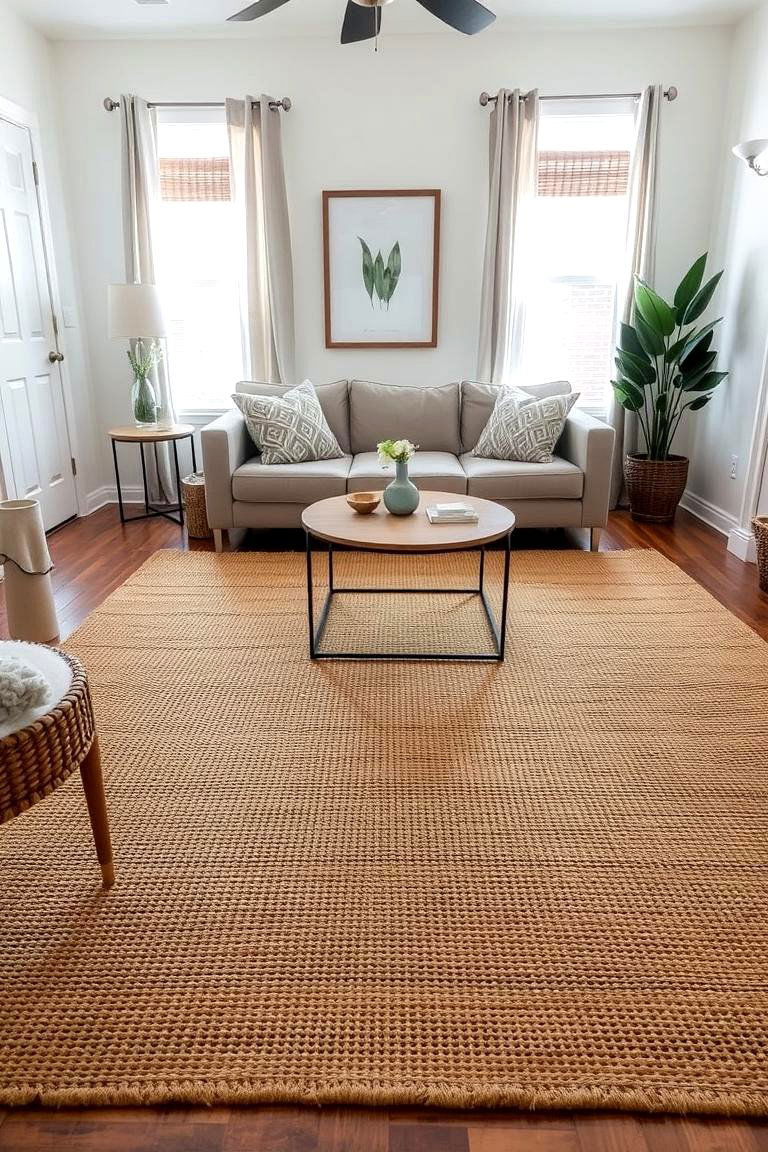
Adding a textured rug to your Zen living room can enhance both its visual appeal and underfoot comfort. Choose rugs made from natural materials like jute, wool, or sisal in neutral tones. The tactile nature of these rugs adds a layer of warmth and coziness to the space. Moreover, a well-placed rug can help to define different zones within an open-plan living room, contributing to a sense of order and balance.
17. Low Furniture Profile for Enhanced Space
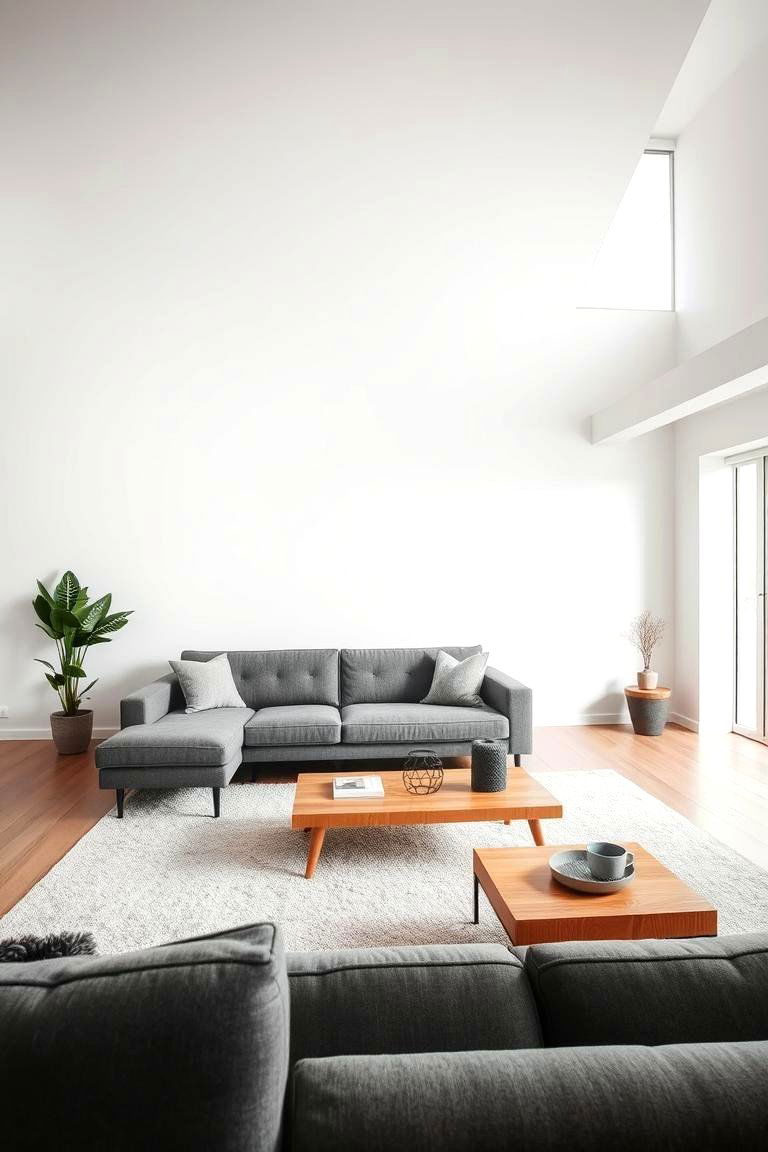
Consider opting for furniture with a low profile in your Zen living room. This creates a greater sense of spaciousness and openness, as it leaves more visual room above the furniture. Low sofas, coffee tables, and shelving units contribute to a more relaxed and grounded atmosphere. Furthermore, this design choice aligns with the minimalist principles of Zen, emphasizing simplicity and functionality.
18. Hidden Storage Solutions for a Tidy Look
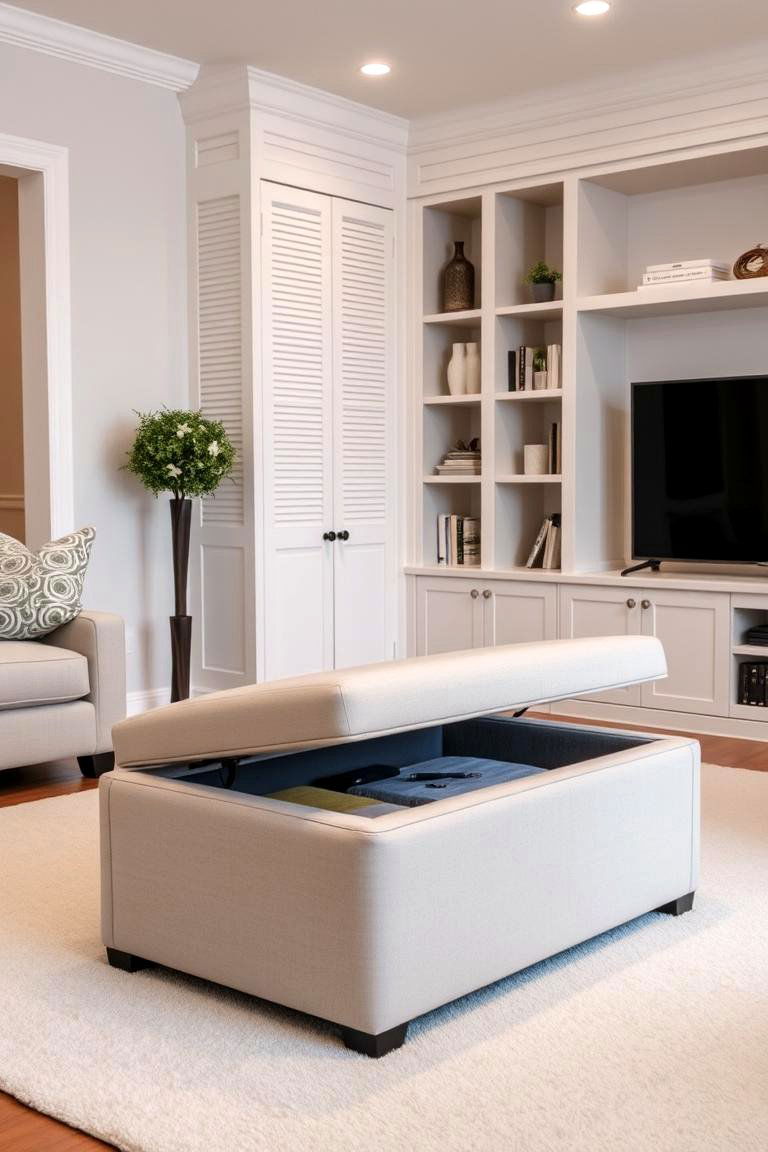
Another key to maintaining a Zen-like atmosphere is to effectively manage clutter. Incorporate hidden storage solutions such as ottomans with storage, built-in shelving with doors, or coffee tables with drawers. These allow you to keep everyday items out of sight, contributing to a clean and uncluttered appearance. By strategically integrating storage, you maintain the serene aesthetic without sacrificing functionality.
19. Fireplace as a Calming Focal Point
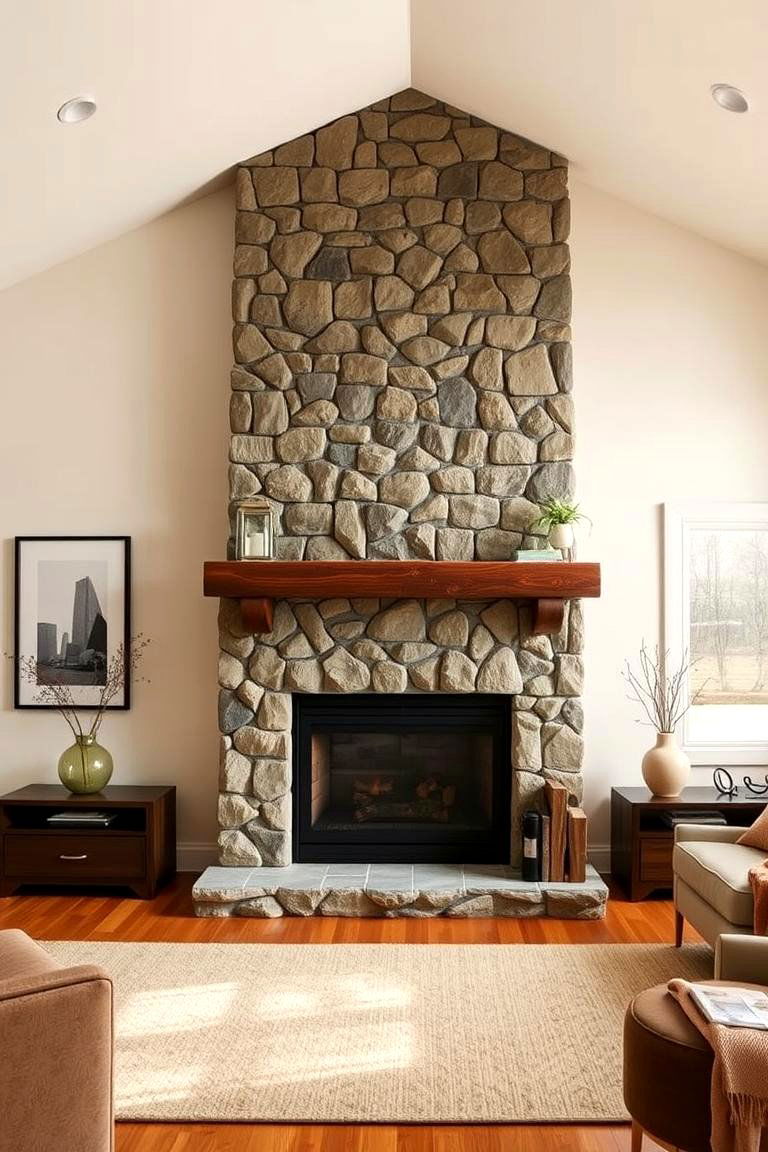
For many, a fireplace serves as a natural focal point in a living room, and it can certainly enhance the Zen ambiance. The flickering flames and the warmth it provides can be incredibly soothing and inviting. If you have a fireplace, ensure the surrounding area is kept clean and uncluttered. Consider adding a few simple decorative elements that complement the overall Zen aesthetic.
20. Bookshelf with Inspiring Reads for Intellectual Peace
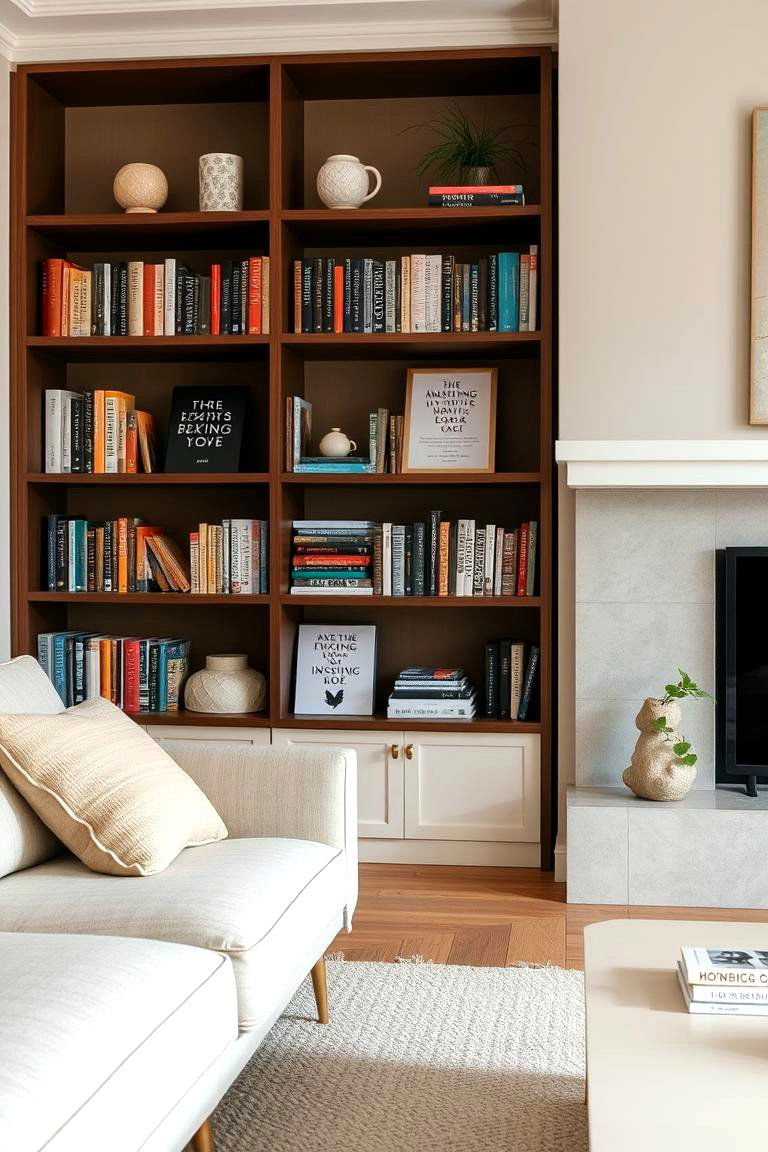
By including a carefully curated bookshelf in your Zen living room, you can add a touch of intellectual peace to the space. Select books that inspire, uplift, or promote mindfulness. Arrange them neatly, perhaps alongside a few small decorative objects. This not only adds visual interest but also encourages moments of quiet contemplation and learning.
21. Dedicated Reading Corner for Quiet Reflection
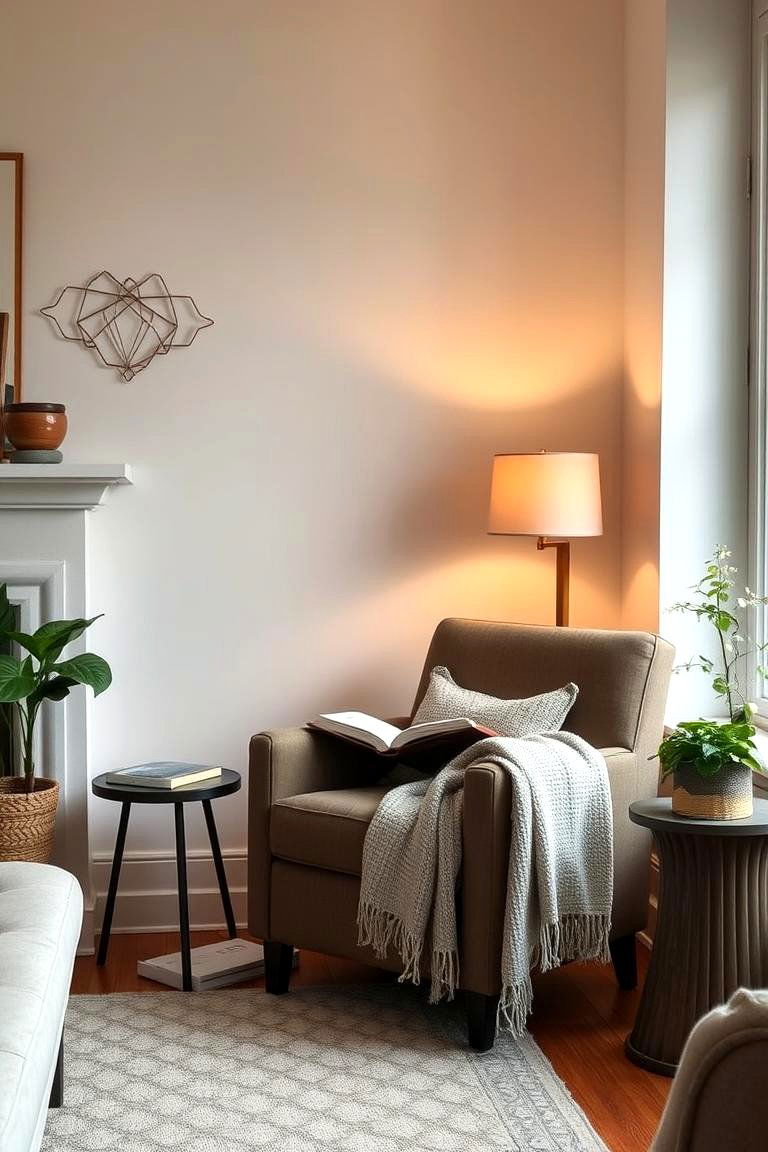
Consider creating a dedicated reading corner within your Zen living room. This could be a comfortable armchair with a soft throw and a small side table for a lamp and a cup of tea. This designated space encourages relaxation and provides a quiet haven for reading and reflection. By carving out this cozy nook, you enhance the sense of peace and tranquility in your living room.
22. Sound Dampening Elements for Auditory Peace
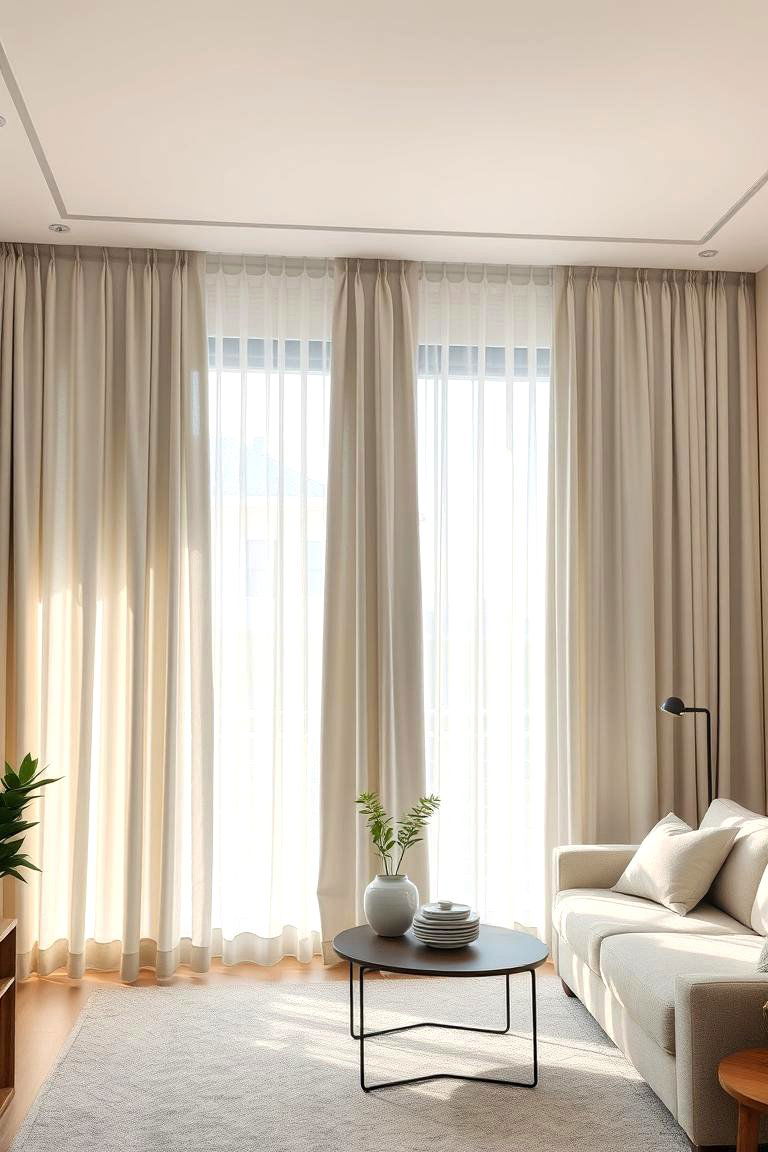
To truly create a Zen sanctuary, consider incorporating sound-dampening elements into your living room. This could include thick curtains, upholstered furniture, or even strategically placed acoustic panels. Reducing unwanted noise from outside or other parts of the house can significantly enhance the sense of calm and tranquility. This attention to auditory peace contributes to a more serene and relaxing environment.
23. Incorporating Personal Touches (Meaningful Objects) for Connection
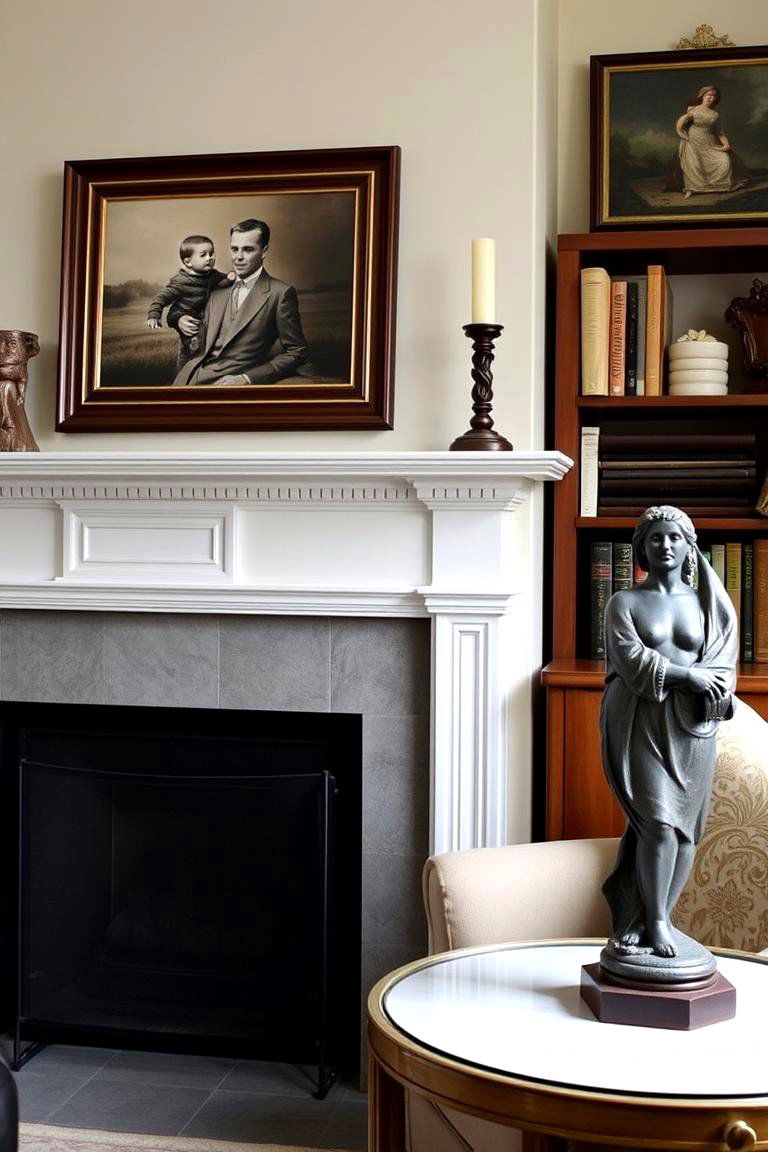
Finally, while minimalism is key, don't shy away from incorporating a few personal touches that hold meaning for you. This could be a cherished photograph, a piece of art collected on your travels, or a meaningful object that brings you joy and peace. These personal elements add character and make the space feel truly your own, enhancing your connection to your Zen living room.
24. Multi-functional Furniture for Practicality

These days, multi-functional furniture plays a vital role in maintaining a Zen aesthetic, especially in smaller spaces. Opt for pieces that can serve more than one purpose, such as a coffee table with storage or a sofa bed for guests. This helps to maximize space and minimize clutter, aligning perfectly with the principles of Zen design. By choosing furniture that is both practical and aesthetically pleasing, you create a living room that is both functional and serene.
Conclusion:
Cultivating a Zen living room is an ongoing journey, a mindful approach to creating a space that nurtures your well-being. By embracing simplicity, incorporating natural elements, and prioritizing tranquility, you can transform your living area into a true sanctuary. Remember, the essence of a Zen living room lies not just in its appearance but in the feeling of peace and harmony it evokes. Embrace these 24 Zen Living Room Ideas as a starting point to craft a space that truly resonates with your personal quest for serenity and mindful living.


